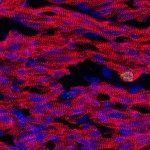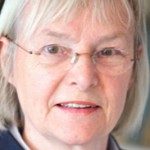Link to Pubmed [PMID] – 20823066
Link to DOI – 10.1242/dev.050674
Development 2010 Oct; 137(19): 3269-79
Head muscle progenitors in pharyngeal mesoderm are present in close proximity to cells of the second heart field and show overlapping patterns of gene expression. However, it is not clear whether a single progenitor cell gives rise to both heart and head muscles. We now show that this is the case, using a retrospective clonal analysis in which an nlaacZ sequence, converted to functional nlacZ after a rare intragenic recombination event, is targeted to the alpha(c)-actin gene, expressed in all developing skeletal and cardiac muscle. We distinguish two branchiomeric head muscle lineages, which segregate early, both of which also contribute to myocardium. The first gives rise to the temporalis and masseter muscles, which derive from the first branchial arch, and also to the extraocular muscles, thus demonstrating a contribution from paraxial as well as prechordal mesoderm to this anterior muscle group. Unexpectedly, this first lineage also contributes to myocardium of the right ventricle. The second lineage gives rise to muscles of facial expression, which derive from mesoderm of the second branchial arch. It also contributes to outflow tract myocardium at the base of the arteries. Further sublineages distinguish myocardium at the base of the aorta or pulmonary trunk, with a clonal relationship to right or left head muscles, respectively. We thus establish a lineage tree, which we correlate with genetic regulation, and demonstrate a clonal relationship linking groups of head muscles to different parts of the heart, reflecting the posterior movement of the arterial pole during pharyngeal morphogenesis.

